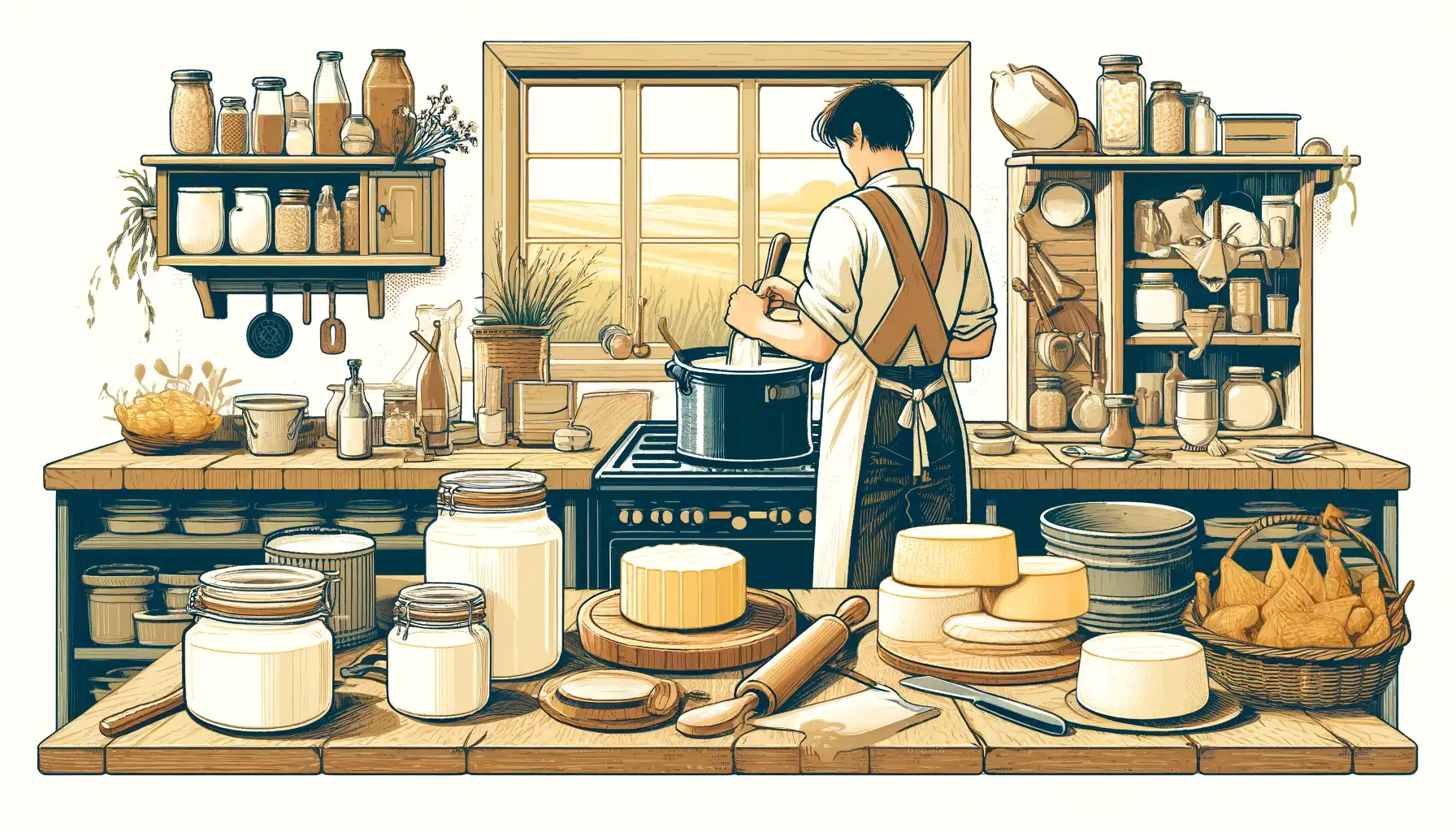The basics
If the idea of crafting homemade cheese excites you, this blog post is for you. In the following lines, we will guide you through the process of making cheese at home, provide information about what you need to know beforehand, and list the essential equipment needed for this gastronomic adventure.
Cheese making is an ancient art, which transforms milk into cheese through the process of acidification, which causes the milk to coagulate, and then the curd is cut and separated from the whey. It's a fascinating process that can range from very simple to highly complex, depending on the type of cheese being made.
Before You Start
Learn About Different Cheese Types
There are several types of cheeses that you can make at home, from fresh cheeses like mozzarella and ricotta to aged cheeses like cheddar and gouda. The processes and equipment required for each type of cheese can vary, so it's essential to research and decide what kind of cheese you'd like to make.
Understanding Ingredients
The main ingredient for cheese making is milk. It's crucial to use high-quality milk because the quality of your milk will directly affect the quality of your cheese. In addition to milk, you'll typically need a starter culture, which adds bacteria to the milk to begin the fermentation process, and rennet, which helps the milk coagulate.
What Equipment You Need
Large Stainless Steel Pot
You'll need a large pot to heat your milk. Stainless steel is the preferred material because it conducts heat evenly and is easy to clean.
Cheese Thermometer
Precision is key in cheese making, so a reliable cheese thermometer is a must. It allows you to monitor the temperature of your milk to ensure it's ideal for the cheese you're making.
Cheese Press
A cheese press is used to apply pressure to your cheese, which helps to form it into a solid mass and expel any remaining whey. If you're making a fresh cheese like mozzarella, you won't need a cheese press.
Cheese Mats and Cheese Paper
Cheese mats are used to drain cheese and are particularly useful for making aged cheeses. Cheese paper, on the other hand, is used to wrap and store cheese. It helps to keep your cheese fresh and protect it from absorbing unwanted flavors.
Starting Your First Cheese Making Process
Once you've gathered your equipment and ingredients, you're ready to start making cheese! Start with a simple recipe, like ricotta or mozzarella. Follow the instructions carefully, paying particular attention to temperatures and timing.
Remember that patience is key when making cheese. Some cheeses can be enjoyed right away, while others need to age for weeks or even months to reach their full flavor potential. Enjoy the process, learn from each batch, and don't be afraid to experiment!


